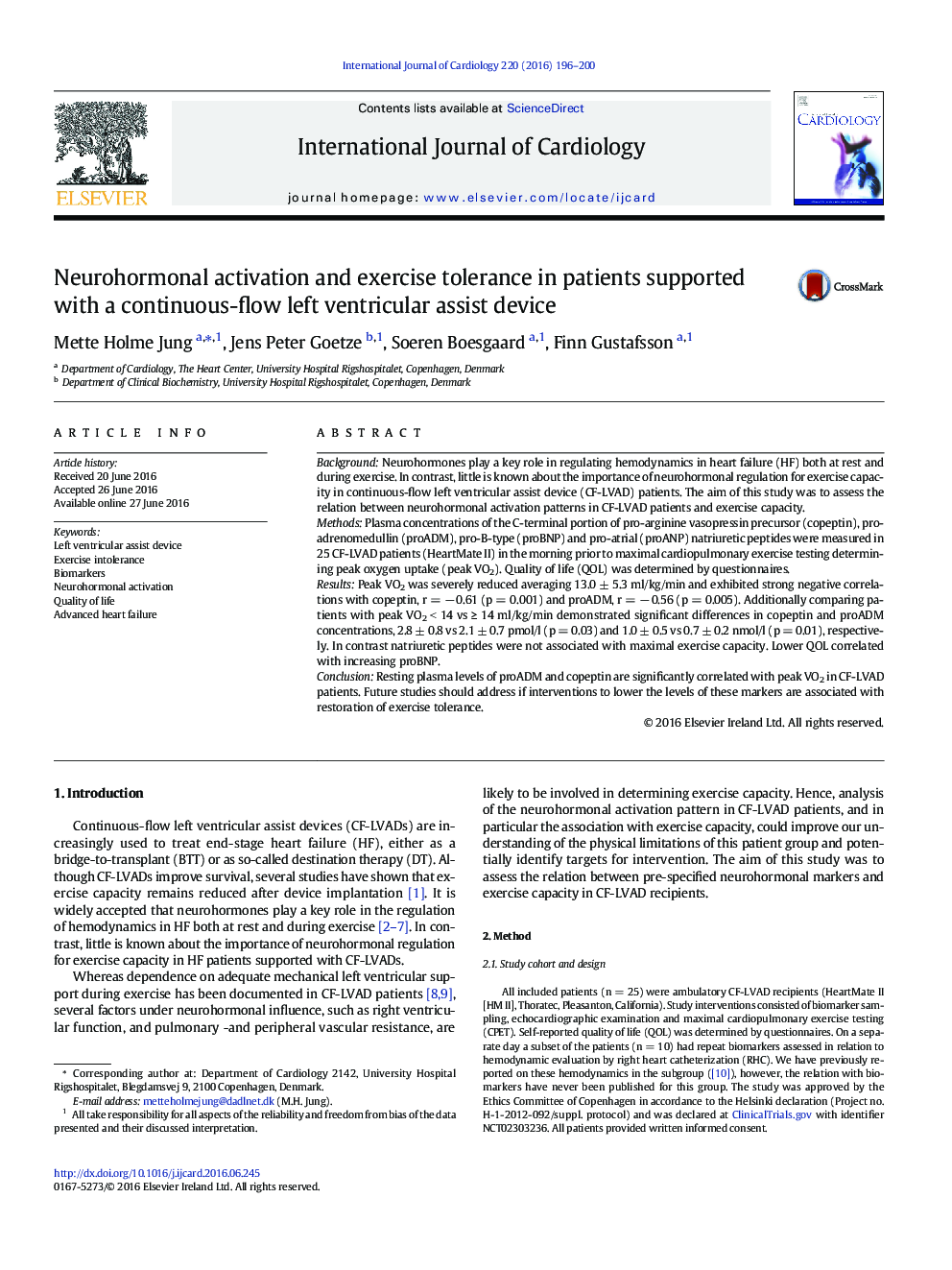| Article ID | Journal | Published Year | Pages | File Type |
|---|---|---|---|---|
| 5963446 | International Journal of Cardiology | 2016 | 5 Pages |
BackgroundNeurohormones play a key role in regulating hemodynamics in heart failure (HF) both at rest and during exercise. In contrast, little is known about the importance of neurohormonal regulation for exercise capacity in continuous-flow left ventricular assist device (CF-LVAD) patients. The aim of this study was to assess the relation between neurohormonal activation patterns in CF-LVAD patients and exercise capacity.MethodsPlasma concentrations of the C-terminal portion of pro-arginine vasopressin precursor (copeptin), pro-adrenomedullin (proADM), pro-B-type (proBNP) and pro-atrial (proANP) natriuretic peptides were measured in 25 CF-LVAD patients (HeartMate II) in the morning prior to maximal cardiopulmonary exercise testing determining peak oxygen uptake (peak VO2). Quality of life (QOL) was determined by questionnaires.ResultsPeak VO2 was severely reduced averaging 13.0 ± 5.3 ml/kg/min and exhibited strong negative correlations with copeptin, r = â 0.61 (p = 0.001) and proADM, r = â 0.56 (p = 0.005). Additionally comparing patients with peak VO2 < 14 vs â¥Â 14 ml/kg/min demonstrated significant differences in copeptin and proADM concentrations, 2.8 ± 0.8 vs 2.1 ± 0.7 pmol/l (p = 0.03) and 1.0 ± 0.5 vs 0.7 ± 0.2 nmol/l (p = 0.01), respectively. In contrast natriuretic peptides were not associated with maximal exercise capacity. Lower QOL correlated with increasing proBNP.ConclusionResting plasma levels of proADM and copeptin are significantly correlated with peak VO2 in CF-LVAD patients. Future studies should address if interventions to lower the levels of these markers are associated with restoration of exercise tolerance.
